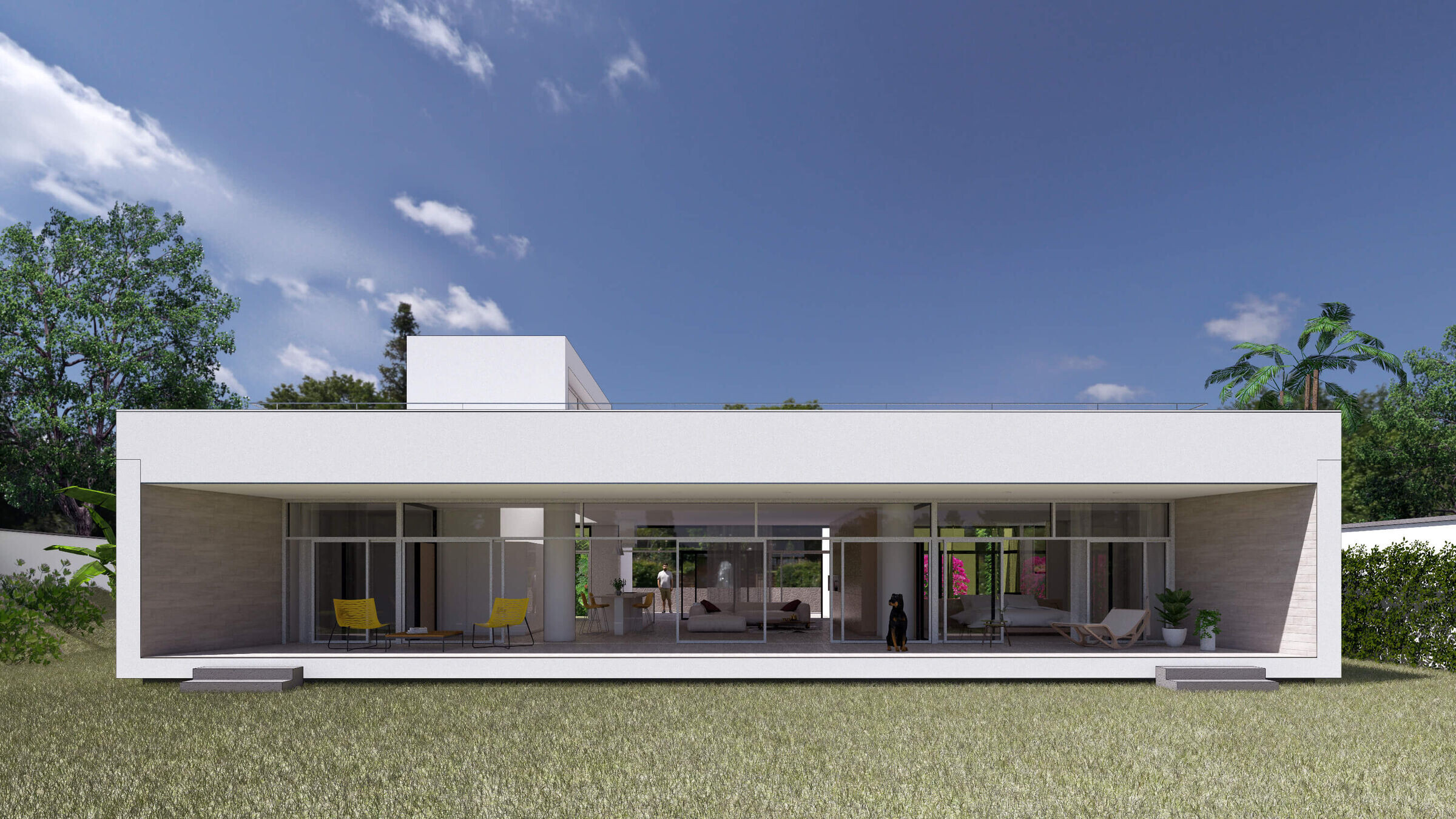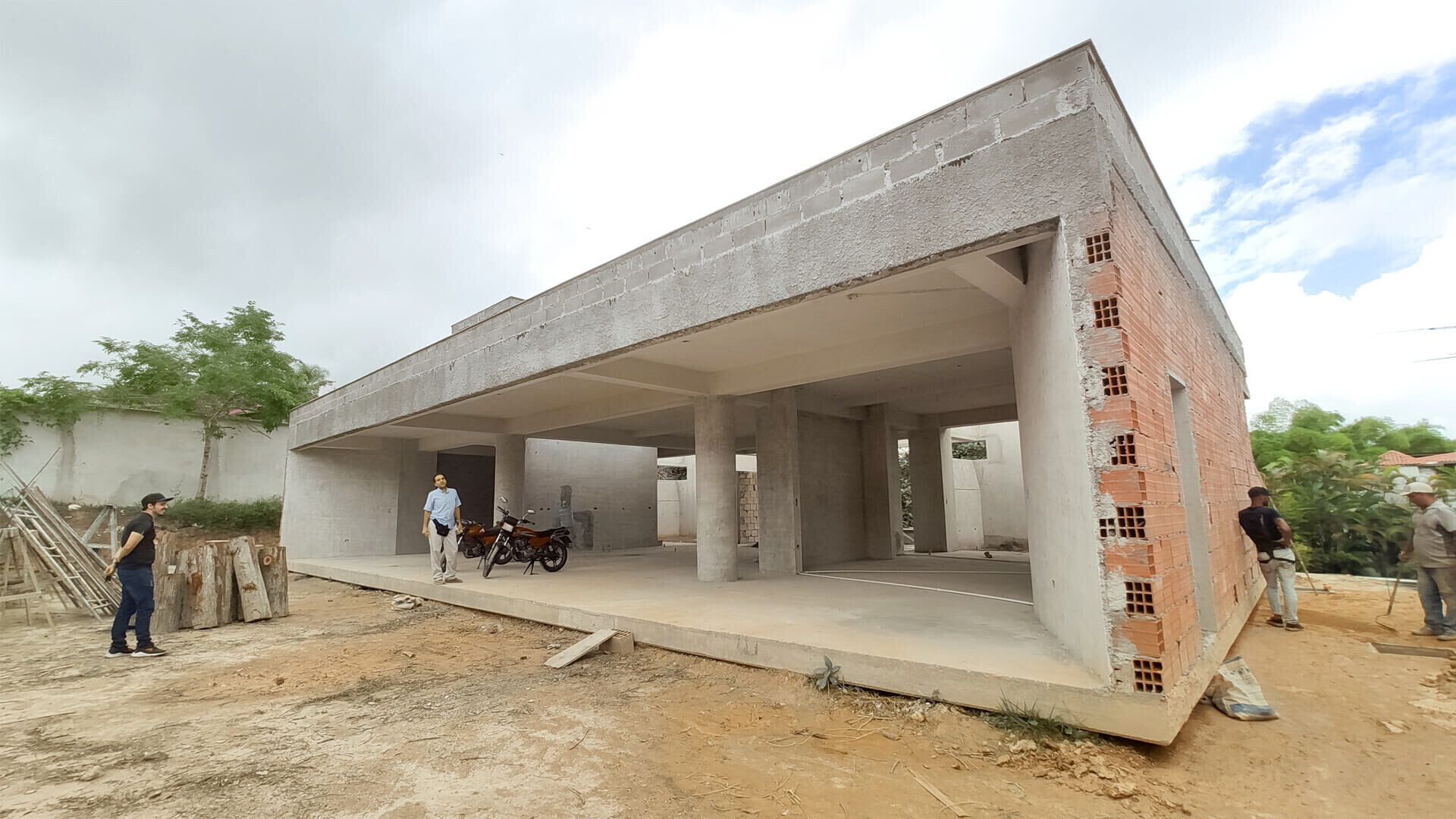Project and construction of a house in Caracas
Our design for this house in Venezuela is based on the desire to build a building that takes advantage of the optimal qualities of location, topography and privileged views of the plot over the existing golf courses.
Access to the house is through a road layout adapted to the unevenness of the terrain, forming two parking terraces that connect to the entrance atrium through a system that combines stairs and ramps to facilitate accessibility.
The program of areas that we were asked to organize corresponds to that of a house for a couple without children.
In this sense, the distribution scheme is quite simple:
Two groups of rooms are articulated around a large living-dining-kitchen, almost exterior, which joins the access atrium and the covered terrace.
In turn, each of them has a small garden courtyard to the south, intimate and protected, designed to ensure lighting and abundant natural cross ventilation in all areas of the house.

"The one and the other": the precedent of contradiction in architecture (1)
When we started working, the images that the owner showed us as a reference of what he wanted to achieve were so dissimilar that we were dismayed. Fortunately, shortly after, we found the possibility of thinking about the design of a house, whose appearance expresses the existence of two opposites that complement each other, very interesting.
Thus, considering that the optimal orientation with respect to the sun coincides with the best views, the house faces north in a diaphanous way, through a large window that spans its entire front.
In contrast, the design of the house in Venezuela is quite hermetic to the south, placing two courtyards confined by walls, which, arranged symmetrically, leave a single central opening between them to form the access atrium.
Hence, the result evidences the marked contrast that we have tried to produce between the north and south facades, responding to the disparate condition of the fronts towards which the building is oriented.
So much so that it is now very difficult for us to imagine it any other way.
Diaphanousness without compromising privacy
Diaphanity is the term that characterizes the main space of the house.
Based on the typological scheme of the crossed central hall, it is marked by the accent introduced by the skylight over the kitchen area.
Fully open on its long fronts, although not in the same way, because it is necessary to accentuate the difference between what we cover to the north and what we filter to the south.
On the other hand, in the central access opening we include an additional layer to the glass door enclosure, consisting of sliding metal grilles, proposed to meet the requirement of natural ventilation, without undermining privacy.
Casa Mirador: observing the second point of the architecture (2)
Finally, taking into account the privileged condition of the site, the roof acts as a viewpoint that extends the house's visual dominance over the near and distant surroundings.
Being ideal as an observatory, in it the owner gives free rein to his hobby of observing space, enjoying the starry nights.

Notes:
(1) Text by architect Robert Venturi, "Complexity and contradiction in architecture" is one of the references of architectural literature of the second half of the twentieth century.
To deepen its analysis, we recommend consulting:
Rodríguez García, Raúl (2016). Road to 1966 : caminos hacia «complejidad y contradicción en la arquitectura», en la cultura arquitectónica de la segunda posguerra en EE.UU. Tesis (Doctoral)
(2) Almost a century after Le Corbusier published the first version of the "Five points for a new architecture", we architects (consciously or not) continue to draw on them when developing our designs. If you wish to learn more about these issues, we recommend that you consult:
Morales, José (2022) Anatomía de un paisaje. Constricciones y libertades en el proceso proyectual de Le Corbusier. LC: Revue de recherches sur Le Corbusier, ISSN-e 2660-7212, Nº. 6, 2022, págs.100-114
3. At the request of the owner (and due to public insecurity in Venezuela), we have omitted the publication of the project drawings.

























